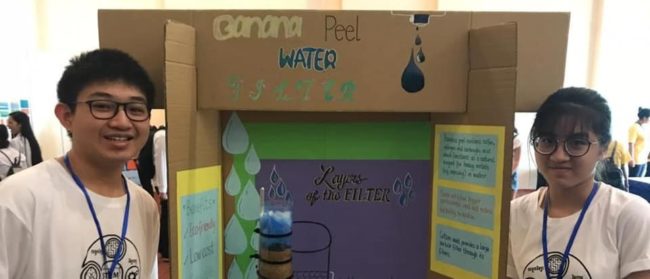The Singapore Cambodia International Academy (SCIA) breaks down the four key strategies of scaffolding in the classroom
How do we teach children to swim? Or to answer a complex mathematics question on their own? We start building scaffolds.
The idea of scaffolding in education is largely inspired by what we see at construction projects. Scaffolding or a scaffold is a temporary external structure used to support a work crew and materials to aid in the construction of buildings. As the building gains stability, the scaffold becomes less necessary and is gradually removed.
From an educational perspective, scaffolding represents the educator providing the students a temporary support system, to aid them in accomplishing a task, or grasping new information. When students are given the support they need while learning something new, they stand a better chance of mastering the content and using that knowledge independently.
Scaffolding involves breaking up the learning process into smaller, manageable chunks for the student and providing a concrete structure for each.
Show and Tell
Do you remember “Show and Tell” when you were a child in the early years of schooling? For many of us, seeing something in action helps us to remember better than listening to it.
Educators show students the outcome or product; the model should be presented side-by-side with a criteria chart. Students are then guided through each step of the process with the model of the finished product in sight.
Educators may “Show and Tell” their thought process of completing a task or solving a problem by thinking aloud. Students can then be given time to share and to talk the processes through. Strategies such as think-pair-share will allow students process the new information, verbally make sense of it and articulate their learning.

Check for Understanding
A wonderful way to ensure the student understands the task required of him/her is to adopt the “Pause, Ask Questions, Pause, Review (PAPR)” strategy. Educators would start by discussing a new concept, and then pause to allow time for thinking. A strategic question is then posed which allows for deeper thinking and discussion. This strategy keeps students engaged as active listeners and provides small breaks for student to synthesise the knowledge received.
Incorporate Visual Aids
Through “Show and Tell”, we know visual cues are important in helping us to remember. The use of visual aids such as pictures, graphics, and charts can help educators visually represent their ideas. Structured worksheets are provided to students to help them visually arrange their thoughts onto the paper in an organised manner.
Assess Prior Knowledge
Students grasp the new content better when they are asked to tap into prior knowledge such as past experiences and have them relate the new content to their own lives.
How Parents Can Help
To be involved in the children’s learning, parents can try S.C.I.A at home also. This will reinforce the strategies the children learn at school. It is very important for parents to understand how Teaching & Learning is done at school for similar strategies to be practised at home. At SCIA, parents are regularly invited to school to learn the different strategies adopted by educators at SCIA.
Read more and Discover the SCIA Education Experience here.



